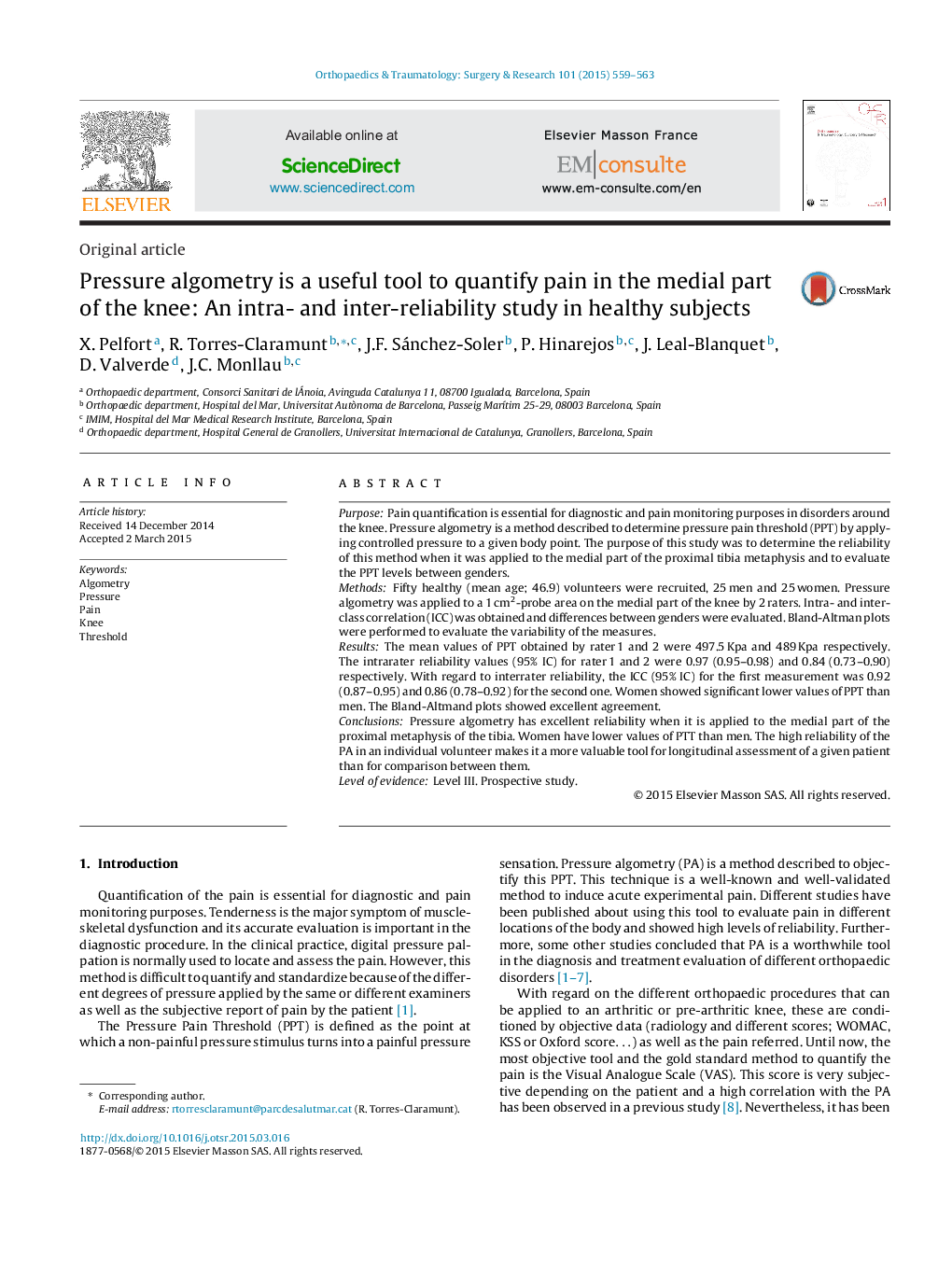| Article ID | Journal | Published Year | Pages | File Type |
|---|---|---|---|---|
| 4081045 | Orthopaedics & Traumatology: Surgery & Research | 2015 | 5 Pages |
PurposePain quantification is essential for diagnostic and pain monitoring purposes in disorders around the knee. Pressure algometry is a method described to determine pressure pain threshold (PPT) by applying controlled pressure to a given body point. The purpose of this study was to determine the reliability of this method when it was applied to the medial part of the proximal tibia metaphysis and to evaluate the PPT levels between genders.MethodsFifty healthy (mean age; 46.9) volunteers were recruited, 25 men and 25 women. Pressure algometry was applied to a 1 cm2-probe area on the medial part of the knee by 2 raters. Intra- and interclass correlation (ICC) was obtained and differences between genders were evaluated. Bland-Altman plots were performed to evaluate the variability of the measures.ResultsThe mean values of PPT obtained by rater 1 and 2 were 497.5 Kpa and 489 Kpa respectively. The intrarater reliability values (95% IC) for rater 1 and 2 were 0.97 (0.95–0.98) and 0.84 (0.73–0.90) respectively. With regard to interrater reliability, the ICC (95% IC) for the first measurement was 0.92 (0.87–0.95) and 0.86 (0.78–0.92) for the second one. Women showed significant lower values of PPT than men. The Bland-Altmand plots showed excellent agreement.ConclusionsPressure algometry has excellent reliability when it is applied to the medial part of the proximal metaphysis of the tibia. Women have lower values of PTT than men. The high reliability of the PA in an individual volunteer makes it a more valuable tool for longitudinal assessment of a given patient than for comparison between them.Level of evidenceLevel III. Prospective study.
